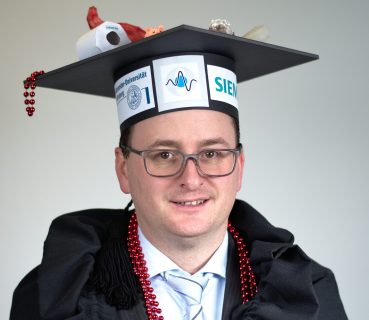Philip Mewes
Computer-aided Diagnosis for Magnetically Guided Capsule Endoscopy
Digestive diseases and disorders are diverse with some being more common and of short duration, whereas others may be life threatening if left untreated. They are among the most common problems that people are afflicted with at least once in their lifetime. As in many other clinical disciplines, diagnosis and treatment of digestive diseases are driven towards minimally invasive approaches. Flexible endoscopy, though today’s gold standard, is still characterized by a considerable level of invasiveness, patient discomfort and the need for anesthesia. In cases with a given diagnostic indication, passive video capsule endoscopy (VCE), developed in the early 2000s, may significantly decrease the invasiveness in performing a differential diagnosis of upper and lower gastrointestinal tract diseases. However, capsule endoscopes have the drawback of not being actively steerable inside the gastrointestinal tract, which limits their diagnostic abilities. Magnetically guided capsule endoscopy (MGCE), which is the imaging modality used in this thesis, has overcome this problem by providing steerability of the capsule endoscope. Although the feasibility of MGCE procedures has been proven in two clinical studies, the quality of the examination depends on the skill of the operator and his ability to detect visual signs of possible pathologies in real time. During a MGCE procedure, the physician needs to focus on two images simultaneously as diagnosis and image acquisition happen mostly at the same time. In comparison, VCE images can be reviewed at a speed suitable for the physician and the reviewing process can be paused whenever necessary. Therefore, a system for assisting the physician in scanning and interpreting images in real time can be beneficial for MGCE. To that end, in this thesis a computer-aided diagnosis (CAD) system, comprised of multiple computational steps, is developed specifically for MGCE images. The first part of this work focuses on the segmentation of bubbles, particles and other debris, which frequently appear in MGCE images, and interfere with the CAD process. The developed approach is capable of segmenting image areas with such content with an average accuracy of 87.8% and is, therefore, providing an image region of interest for further processing. In the second part of this thesis a novel system for semantic and topological classification of MGCE images is presented. Based on a series of processing steps and extracted features, images are grouped into different categories. These categories are, for example, the anatomical location of the acquisition, or the image pose relative to anatomical structures in the upper gastrointestinal tract. An average accuracy of over 80% for all classification stages could be achieved. Such information facilitates the post-procedure review process or provides strong a priori knowledge for CAD algorithms. In the third part of this work a CAD method is developed that can automatically detect two different pathologies in MGCE images. The objective of this technique is to operate during the intervention. It indicates in real time the presence of pathological structures to the physician, who can then decide whether to more closely examine the indicated area. The presented approach yields a 95% average sensitivity. The last part of this work focuses on the detection of pre-cancerous signs. To that end, a staining technique, so-called chromoendoscopy, is applied to MGCE and is evaluated in order to highlight pathologies that are barely visible for the human observer. This work charts a path for the application of chromoendoscopy on MGCE via an ex-vivo animal study, in order to improve the visibility of pre-cancerous changes in cells and tissues. In summary for my thesis, I designed a diverse set of tools for computer-aided diagnosis in MGCE. The developed CAD system offers both real time interventional support, as well as facilitation of off-line processing.
